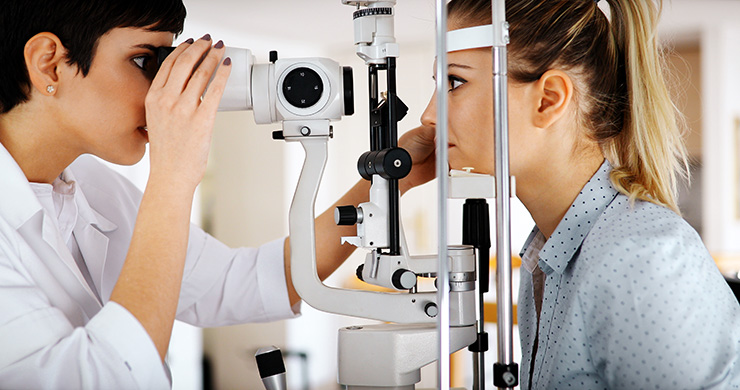Experience Personalized Care with Opticore Optometry in Chino
Experience Personalized Care with Opticore Optometry in Chino
Blog Article
Understanding the Comprehensive Duty of an Optometrist in Modern Eye Treatment
In the progressing landscape of healthcare, the scope of an optometrist's function has considerably broadened, expanding well beyond the confines of conventional vision improvement. With improvements in modern technology and a boosting focus on preventive care, eye doctors are important in identifying and managing persistent eye problems, while additionally involving in early illness detection. Their proficiency in innovative diagnostic strategies such as optical coherence tomography is very useful. But exactly how do these obligations converge with their function in advertising overall eye wellness, and what does this mean for patient end results in a collaborative healthcare setting?
Expanded Extent of Practice
In recent times, the duty of eye doctors has evolved significantly, with numerous professionals currently welcoming an increased extent of method that expands beyond standard eye evaluations. This advancement reflects the growing acknowledgment of optometrists as primary healthcare providers in the area of eye treatment. Their responsibilities currently encompass a vast array of services, including prescribing drugs for eye conditions, handling chronic eye conditions, and performing small medical procedures. This shift has been driven by innovations in optometric education, boosted professional training, and the raising demand for extensive eye care solutions, especially in underserved areas.
Additionally, optometrists are currently more associated with collaborative treatment, working very closely with ophthalmologists, health care medical professionals, and various other healthcare specialists to guarantee all natural client treatment. This interprofessional collaboration is essential in taking care of complicated cases that require a multidisciplinary technique. Furthermore, optometrists are playing a crucial role in public wellness initiatives, such as vision testings and eye wellness education, targeted at boosting community wellness outcomes.
The expanded range of practice for optometrists not only enhances their capability to offer detailed treatment however also addresses the expanding need for effective and accessible eye treatment services, contributing to total healthcare enhancements.
Early Disease Discovery
Very early detection of eye illness is significantly coming to be a focal point in the increased function of eye doctors. As key eye care companies, optometrists are uniquely placed to recognize very early indicators of ocular problems such as glaucoma, macular degeneration, diabetic person retinopathy, and cataracts. This pivotal role is important, as early medical diagnosis can dramatically boost the management and prognosis of these problems, potentially stopping vision loss and boosting patient outcomes.
Eye doctors use detailed eye examinations to find subtle adjustments in vision and eye health. The capacity to acknowledge very early signs of systemic health and wellness concerns, such as high blood pressure and diabetic issues, with ocular signs better underscores the value of regular eye check-ups.
In addition, optometrists play an essential function in person education and learning, highlighting the significance of routine eye exams as component of overall health care. By fostering a proactive strategy to eye care, optometrists add dramatically to public health and wellness, making certain conditions are caught and managed effectively prior to they can progress.
Advanced Diagnostic Methods
Advanced analysis strategies have actually changed the method of optometry, enabling professionals to discover and monitor ocular diseases with unmatched accuracy. These innovations have actually changed the optometric landscape, permitting extra advanced analysis and intervention strategies. Technologies such as optical comprehensibility tomography (OCT) supply high-resolution, cross-sectional pictures of the retina, assisting in very early detection of problems like glaucoma and macular deterioration. This non-invasive method has become essential in modern optometry, offering thorough understandings into retinal layers.
Another critical development is digital retinal imaging, which catches detailed views of the retina using high-def why not check here cams. This modern technology is vital in recognizing changes in retinal framework gradually, thus aiding in the management of problems like diabetic person retinopathy. Visual area screening, enhanced by computer-aided systems, permits accurate mapping of a client's visual field, necessary in tracking and identifying glaucoma development.
Corneal topography, another notable analysis device, creates detailed maps of the cornea's surface. This is specifically useful in suitable get in touch with lenses and planning refractive surgery. These sophisticated analysis techniques collectively enable optometrists to offer positive, targeted care, guaranteeing far better client end results and enhancing their pivotal role in eye health management.
Taking Care Of Chronic Eye Conditions
Managing persistent eye conditions is a keystone of optometric care that requires a detailed understanding of different eye illness and their long-lasting effects. Eye doctors play a pivotal function in surveillance, managing, and diagnosing problems such as glaucoma, diabetic person retinopathy, and age-related macular deterioration. These problems, if left neglected, can result in significant visual impairment or loss of sight, highlighting the essential significance of ongoing treatment and administration.
Eye doctors use a series of analysis tools, including optical coherence tomography (OCT), aesthetic area testing, and fundus photography, to evaluate the development of these chronic conditions. By carefully keeping an eye on adjustments in ocular health and wellness, optometrists can change treatment strategies to mitigate condition development. This may involve suggesting medications, recommending way of living modifications, or coordinating with ophthalmologists for medical treatments when necessary.

Role in Preventive Care
Precautionary treatment is a basic aspect of optometry that concentrates on maintaining read this eye wellness and preventing the start of ocular diseases. Optometrists play a vital function in very early discovery and avoidance, using normal eye evaluations to determine risk elements and subtle changes in eye health and wellness. Eye Doctor Optometrist. These examinations are not merely regarding vision improvement however include an extensive analysis of eye functions and structures, making it possible for the recognition of problems such as glaucoma, cataracts, and macular deterioration at an onset
Along with diagnostics, optometrists enlighten people on lifestyle selections that promote eye wellness, such as correct nutrition, UV security, and the value of regular eye check-ups. They advise on the proper usage of digital gadgets to stop electronic eye important site stress, an expanding issue in the digital age. Eye doctors also give guidance on safety glasses for occupational and recreational activities, minimizing the risk of injury.
Preventive eye care includes systemic wellness problems that materialize in the eyes, such as diabetes mellitus and hypertension. By collaborating with various other medical care specialists, eye doctors contribute to alternative patient care, highlighting the interconnectedness of systemic and ocular wellness. This aggressive strategy is necessary in protecting aesthetic acuity and total wellness.
Conclusion
Optometrists now occupy a crucial function in modern-day eye care, characterized by a broadened scope that consists of diagnosing and taking care of chronic eye problems, suggesting medicines, and executing minor procedures (Eye Doctor Optometrist). Their competence in early condition detection is boosted by sophisticated analysis strategies such as optical coherence tomography and digital retinal imaging. By highlighting precautionary treatment and patient education, optometrists contribute considerably to overall eye wellness, collaborating with various other medical care experts to ensure detailed and reliable client end results

In addition to diagnostics, optometrists enlighten individuals on way of life selections that promote eye health and wellness, such as correct nutrition, UV security, and the relevance of regular eye check-ups.Precautionary eye treatment prolongs to systemic wellness concerns that show up in the eyes, such as diabetic issues and hypertension.Optometrists currently occupy a pivotal role in modern-day eye treatment, characterized by an increased range that consists of detecting and taking care of persistent eye problems, suggesting drugs, and carrying out minor surgical procedures.
Report this page